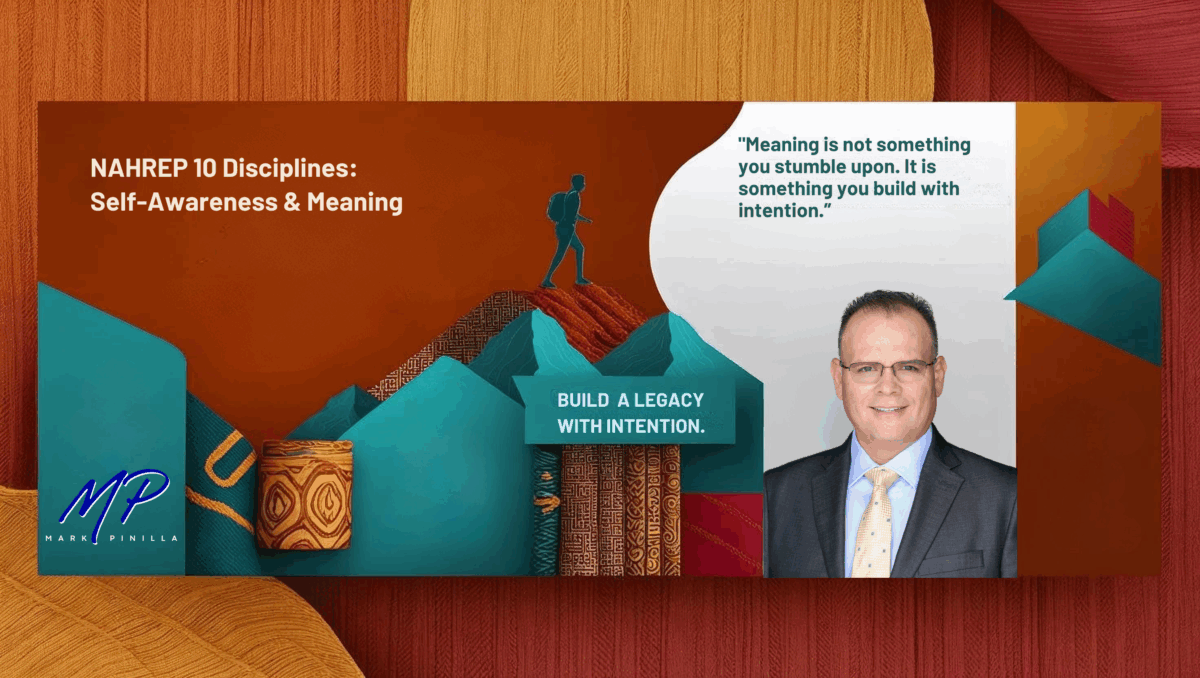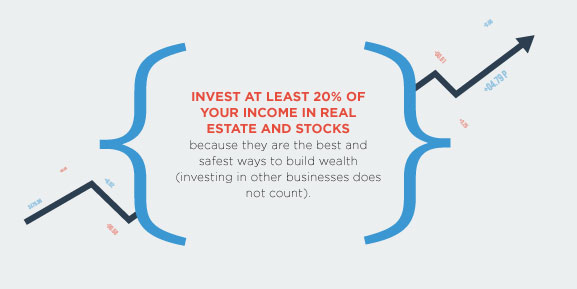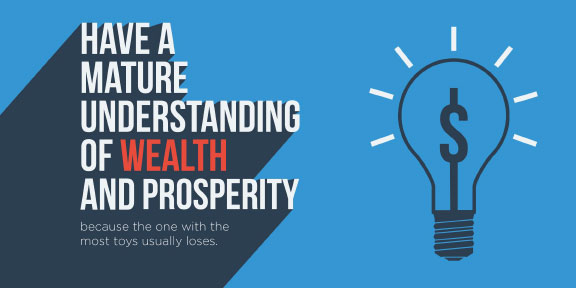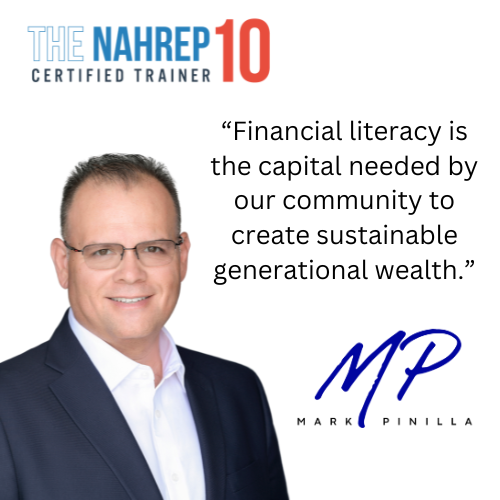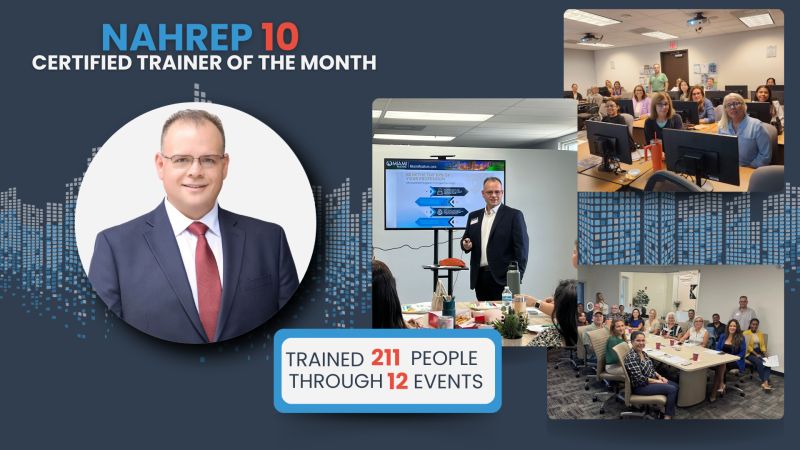In a time when achievement is often mistaken for fulfillment, the question of what gives life true meaning has never been more urgent. Many chase success but feel no satisfaction. They build wealth but lack peace. As someone who trains and coaches others using the NAHREP 10 Disciplines, I have seen firsthand that meaning is not found in accolades or approval. It is created through alignment, action, and accountability.
Meaning is not something you stumble upon. It is something you build with intention. And the foundation is discipline.
Simon Sinek teaches us to start with why. John Maxwell reminds us that leadership is influence. Brene Brown urges us to lead with vulnerability and integrity. These principles, echoed in the NAHREP 10 Disciplines, point us toward a powerful truth. When you align your daily actions with your highest values, your life becomes meaningful because it begins to matter to others.
As a NAHREP 10 Certified Trainer, my mission is to help professionals grow their impact by living with intention. Whether you are building a real estate business, creating financial freedom, or becoming a role model in your community, the lessons are the same. Be honest with yourself, stay disciplined in your habits, and lead with vision, as highlighted by the NAHREP 10 Disciplines.
Self-Awareness of your Financial Position
Every step toward lasting growth begins with one critical act: telling yourself the truth. Not sugarcoating. Not avoiding. Just getting real. This isn’t about guilt—it’s about ownership. Because when you clearly see where you stand, you finally have the power to change it.
One of the most transformational financial habits is knowing your net worth. It’s not just a number—it’s a mirror. It reflects how you’ve handled money, what habits you’ve built, and where your priorities lie. Tracking your net worth forces you to face the truth: what you own, what you owe, and what direction you’re actually heading in.
When you do the math, you stop guessing—and start growing. Because awareness leads to smarter decisions, and smarter decisions lead to financial freedom. That’s why this NAHREP 10 Discipline isn’t optional. It’s foundational within the NAHREP 10 Disciplines framework.
Mastery and Growth is a Core Value
A life without skill is a life without direction. As professionals, we must commit to being excellent at what we do. That means becoming a student of our craft. It means reading, training, practicing, and sharpening our thinking every single day.
Clarity in language and confidence in communication are more than soft skills. They are tools of influence. Whether in a client consultation or a family conversation, those who can speak clearly, listen actively, and write with purpose are those who lead with impact.
Being coachable is one of the most underrated disciplines. It is not about admitting weakness. It is about welcoming growth. A willingness to learn from others and evolve your mindset is how you stay relevant and resilient, as highlighted by NAHREP 10 Disciplines.
The Climb to Success: Discipline and the NAHREP Path to Impact
No worthwhile goal comes without resistance. The best leaders are not those who had it easy. They are those who chose to keep climbing when things got hard. If you want to be in the top 10 percent of your profession, you need to train for it like an athlete. Not just with more effort, but with more intention.
Success is not about working more hours. It is about doing the right work with the right mindset, for the right reasons. When your purpose is clear, your energy has direction. When your goals have depth, your discipline becomes sustainable. Aligning with the NAHREP 10 Disciplines makes this journey easier.
Civic Engagement and Advocating with Purpose
One of the most important but often overlooked aspects of building a meaningful life is the ability to impact change beyond your immediate circle. True leadership includes understanding how laws, policies, and government systems affect your business, your community, and future generations.
Being politically savvy means staying informed about public policy, engaging with your local representatives, and using your voice to advocate for the interests of underserved communities. It is not about partisanship or political theater. It is about responsible citizenship and strategic involvement in the systems that shape opportunity.
The NAHREP 10 Disciplines challenge us to use our influence not just for profit, but for progress. Whether you are supporting housing legislation, advocating for fair lending, or encouraging civic participation, your engagement matters. Change does not happen by chance. It happens when prepared leaders show up.
Call to Action
Now is the time to begin. Whether you are reflecting on your finances, your leadership, or your community impact, the shift starts with one decision—to become more intentional, more informed, and more aligned. You have the power to begin that change today.
If you are ready to lead a life that is not just successful but significant, reach out. I would be honored to support your growth, your business, and your role in creating generational wealth within your community. Whether through a strategy session, a training workshop, or simply a meaningful conversation, let’s move forward together.
Contact Mark Pinilla to explore how the NAHREP 10 Disciplines can help you grow, give back, and lead with impact.
#LiveWithPurpose #MeaningfulLeadership #NAHREP10 #LatinoLeadership #GenerationalWealth #BuildWithDiscipline #PolicyWithPurpose #EmpowerYAvanza #RealEstateImpact #CommunityDrivenSuccess #MarkPinilla #PurposeInAction #AdvocateForChange #LeadershipDevelopment #LegacyBuilders #HispanicWealthProject #NAHREP #NAHREPSouthFlorida

